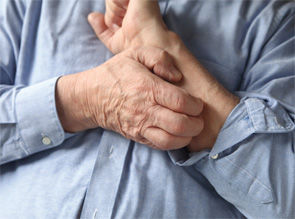
Plaquenil is a mainstay of treatment for inflammatory arthritis and skin symptoms.
Image Credit: Alice Day/shutterstock.com
In 1984, I wrote my first prescription for the antimalarial drug, hydroxychloroquine (Plaquenil), for a 28-year-old woman with SLE. She was considerably overweight, with inflammatory arthritis and a photosensitive rash, and I worried that oral corticosteroids would tip her over into diabetes. I presented the case to my attending, Steven Malawista, MD, at the Yale New Haven Medical Center (Conn.) where I was a visiting internal medicine resident, and to my relief, he agreed with my plan.
But at that time, in reviewing potential side effects, I had to scare the “bajeezus” out of my patient: “Plaquenil is usually very safe,” I told her, “but it can damage your retina, and we need to obtain a baseline eye exam and then monitor your eyes every six months for as long as you are on the drug.”
I can still remember her pointing an accusing finger at my nose and saying, “You mean to tell me that because I have this ugly rash and some aches and pains, you’re going to give me a medicine that might make me go blind?”
“Well, ugh, no, I mean we need to be cautious. Just a minute. Let me get my attending, and he can talk to you.”
Luckily, Dr. Malawista was able to convince our patient to take the prescription. After three months, it worked; her rash and inflammatory arthritis resolved. She didn’t go blind. Actually, over the ensuing 31 years, none of my patients have suffered visual loss on Plaquenil. That is a wonderful story in itself: How many of our medications have stood the test of time as effective medications and are safer than originally believed? And how did we make the leap from treatment of malaria to the recognition of Plaquenil’s value in the management of lupus and rheumatoid arthritis?
In the treatment of SLE, [Plaquenil is] widely regarded as a cornerstone drug in the management of skin & arthritis symptoms.
History of Antimalarials
The history of antimalarials dates back to the 1630s in Peru, where, in all likelihood, malaria was not endemic, and an extract from the “fever tree,” which grew on the eastern slopes of the Andes. Antonio de Calancha, an Augustinian monk, was the European first credited with describing the medicinal effects of the fever tree, “whose bark, of the color of cinnamon, made into powder amounting to the weight of two small silver coins and given as a beverage, cures the fevers and tertiana; it has produced miraculous results in Lima.”1

